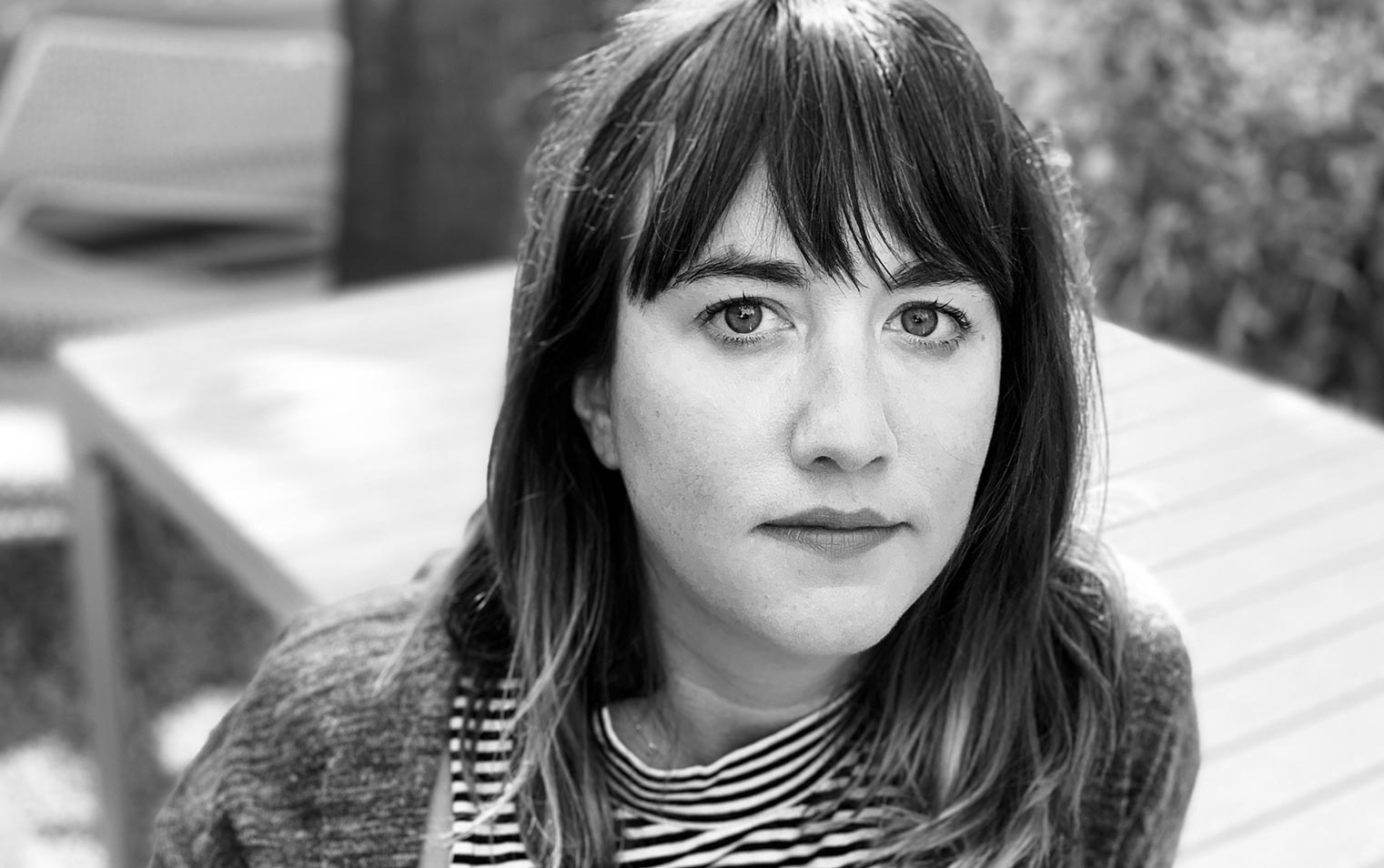
Ask any documentary director worth their salt where films really get made and they’ll confess: the edit. It’s the editor who combs through hours and hours of footage hunting for the threads that’ll weave the tapestry of the story together.
In this respect, Lindsay Utz is at the top of her game. Her latest project, American Factory, follows a Chinese billionaire who opens a car-glass factory in an abandoned General Motors plant in Ohio. Early optimism gives way to setbacks as high-tech China clashes with working-class America. The film combines humor with heartbreak, the duality that drew Utz to the story.
She's eschewed the current trend toward slick, over-produced documentaries in exchange for intimate stories that tackle politically engaging and timely cultural issues. It’s made her job more challenging — often she must slog through thousands of hours of footage to search for the beats and characters that push the narrative forward. But, ultimately, it’s created a rewarding career.
Her instincts were likely what caught the attention of Julia Reichert, one of the top documentary directors working today. Since 1971, Reichert has made feature-length documentaries that embrace tough subjects: socialism, feminism, unionization, and radical action. They’re noted for their compassion and empathy, portraying complex political stories through the lens of ordinary people.
No surprise, then, that Jonathan Olshefski’s documentary Quest (2017), an Utz-edited intimate portrait of the daily struggles of an African-American family living in Philadelphia, caught Reichert's eye. Indeed, Quest, a nominee in two Emmy categories this year, has already netted Utz a Cinema Eye prize for Outstanding Editing.
Given the recognition Utz is receiving from all quarters, Reichert's decision to approach her about American Factory makes a lot of sense. Utz, deeply committed to verité craft and stories with substance, was immediately interested in the project.
It’s choices like these that are putting Utz at the forefront of her game. She’s served on the jury of tier-one documentary film festivals, such as 2018’s Full Frame. And earlier this year she was asked to join the Academy of Motion Pictures’ documentary branch, a responsibility that’ll mean watching up to 200 documentaries each year to help choose the nominees for best documentary in both the feature and short categories.
While American Factory is the first film to be released through the Obamas’ Netflix-partnered Higher Ground Productions, it won’t be the first time a documentary edited by Utz is receiving early whispers among Academy members. Her first film, Bully, was shortlisted for an Oscar after premiering at the Tribeca Film Festival.
Journalist Elaisha Stokes, herself a documentary filmmaker, sat down with Utz before American Factory’s release to talk about what it takes to get through such a monumental edit.
Elaisha Stokes: American Factory is the latest in a series of films you’ve edited. How did you get into editing feature documentaries?
Lindsay Utz: The traditional route to becoming a documentary editor is to get a job as an assistant and work your way up. I didn’t do that. When I got out of college, video was exploding on the web. I got a job for a newly launched magazine called GOOD and helped found their video department. I worked there for several years, producing and editing all sorts of short documentaries. We were one of the first magazines investing in really high quality production of videos specifically for the Internet. We did over a hundred different pieces. We had a daily news show and a documentary short series.
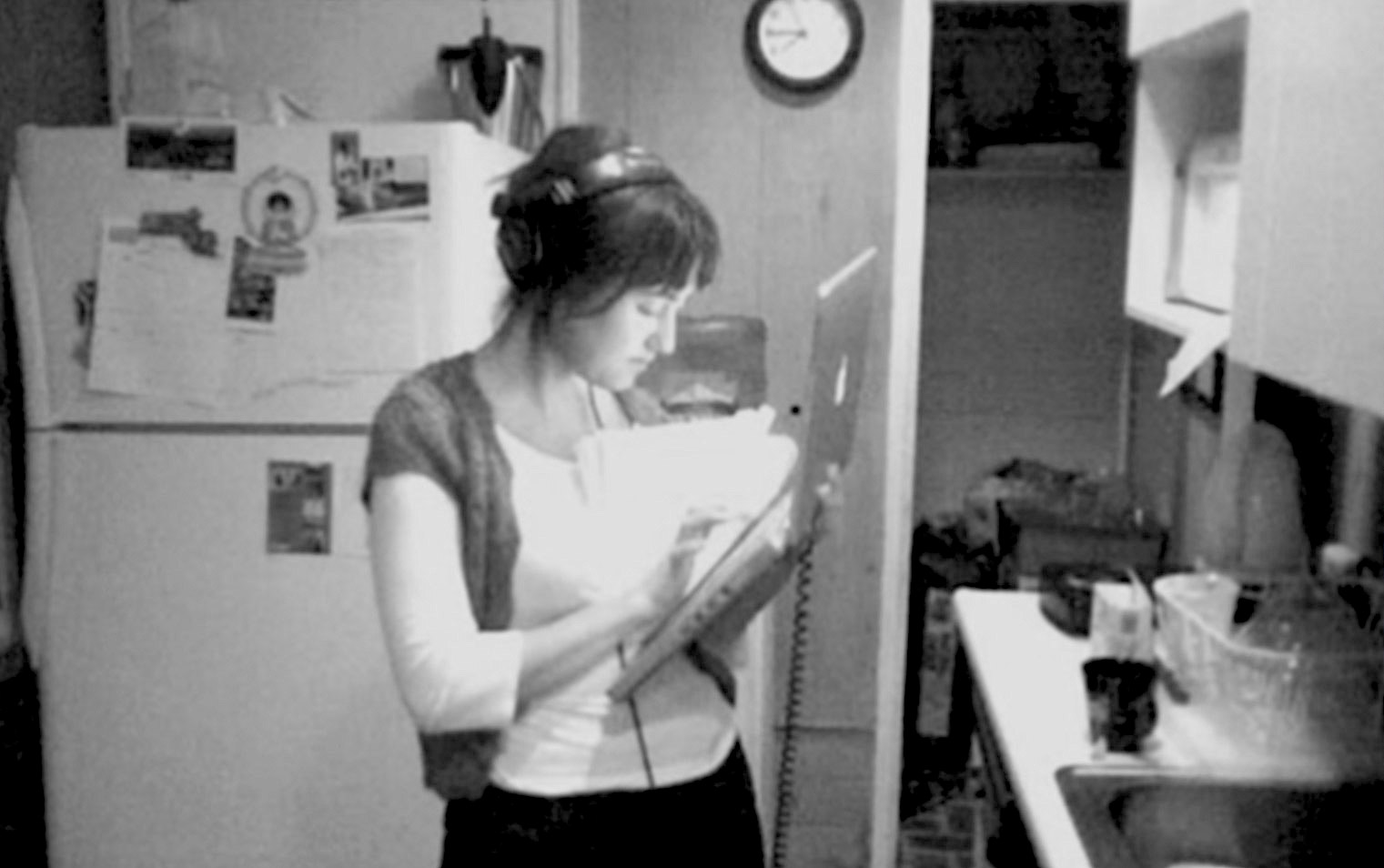
Utz at the GOOD house in Los Angeles
It was a cool job because I got to wear a lot of hats: producing, directing, editing. But it helped me realize that my heart really was in the edit room, and that’s where I wanted to be. I decided I wanted to cut feature films. I had just met Lee Hirsch through GOOD magazine, and he was making a film about bullying. He showed me a little clip from the movie on his phone at a bar in New York one night. I asked him if I could cut the work sample; they needed a five-minute video for an upcoming pitch. And so I moved back in with my parents and did it for free, just to prove that I could do it. They liked it so much that they hired me to cut the film, and that was Bully. That was my first feature-length documentary.
Elaisha: Bully went on to become one of the breakout documentaries of 2011.
Lindsay: Yes. The Weinstein Company snapped it up from the Tribeca Film Festival, back when Weinstein was still the big name in town. It was later short-listed for an Oscar. After that, it was a lot easier to get onto other films. That was how it all started.
Elaisha: Do you feel like you have more choices in the projects you take on now?
Lindsay: Yes, definitely. And I’m not going to sign up for something as intense as cutting a documentary film unless it feels like a good fit, you know what I mean?
Elaisha: Sure, it’s a big commitment!
Lindsay: Exactly. Fortunately, the more credits you have, the more options are open to you. So, you can be even pickier, for sure.
Elaisha: What kind of criteria are you looking at when you choose a project now?
Lindsay: I always look at raw material before I take on a project. I ask the director to send me a hard drive so I can look at some of the raw footage and get a feel for it. Often directors will send you something they’ve already cut themselves. But it can be very hard to see the potential of the film unless you spend time with the raw material. And that material really needs to resonate with me if I’m going to take on the project.
It’s also just as important that I really like the director, because you're basically married to each other for a year. If you don't share the same filmmaking philosophy and vision, if you don’t share the same taste, it’s going to be hard. There are a lot of factors that go into that chemistry, and sometimes you don’t know until you start, but I try to be careful about choosing the right films.
“ . . . it can be very hard to see the potential of the film unless you spend time with the raw material. And that material really needs to resonate with me if I’m going to take on the project.”
Elaisha: How did American Factory come across your desk?
Lindsay: I met Julia Reichert at the True/False Film Festival in 2017. I had just finished editing the documentary Quest, and she came to the screening. After the Q&A, she came up to me and said, ”I love this film. I love what you did with this film. I think you're the editor for our film.” And I was, like, oh, OK. Wow. She said they had a very big project that they were working on and were looking for an editor and wanted to talk. A couple months later we had breakfast, along with [co-director] Steve [Bognar], at the Full Frame Film Festival. And we just clicked. It felt like a good fit. We just all just really liked each other. We were on the same page about what the film could be and how rich the story was.
Elaisha: She's kind of a big deal director too.
Lindsay: Yeah. She's been making films for almost fifty years and has multiple Oscar nominations. Steve has also made a number of award-winning films of his own, and as a directing team, they've done so much powerful work, including an Oscar-nominated short about this same factory back in 2009. But she and Steve are also very much homegrown, humble filmmakers. She went to college in Yellow Springs, Ohio, and still lives there. She's been making films about the Midwest and the working class forever. I was drawn to the down-to-earth quality they both have.
Elaisha: How much time did you guys end up spending together during the edit?
Lindsay: I was in Chicago, and we did a kickoff session together in Yellow Springs. Then I worked in my studio with my on-site assistant, as well as our assistants in Yellow Springs, for long stretches on my own. At certain points, Julia and Steve would review cuts, or come to Chicago to work, or I would go to Yellow Springs. In the summer leading up to the Sundance deadline, I moved to Yellow Springs with my family so I could be closer to them. We picture-locked in December in Chicago. So, it was a mix of time together and time apart.
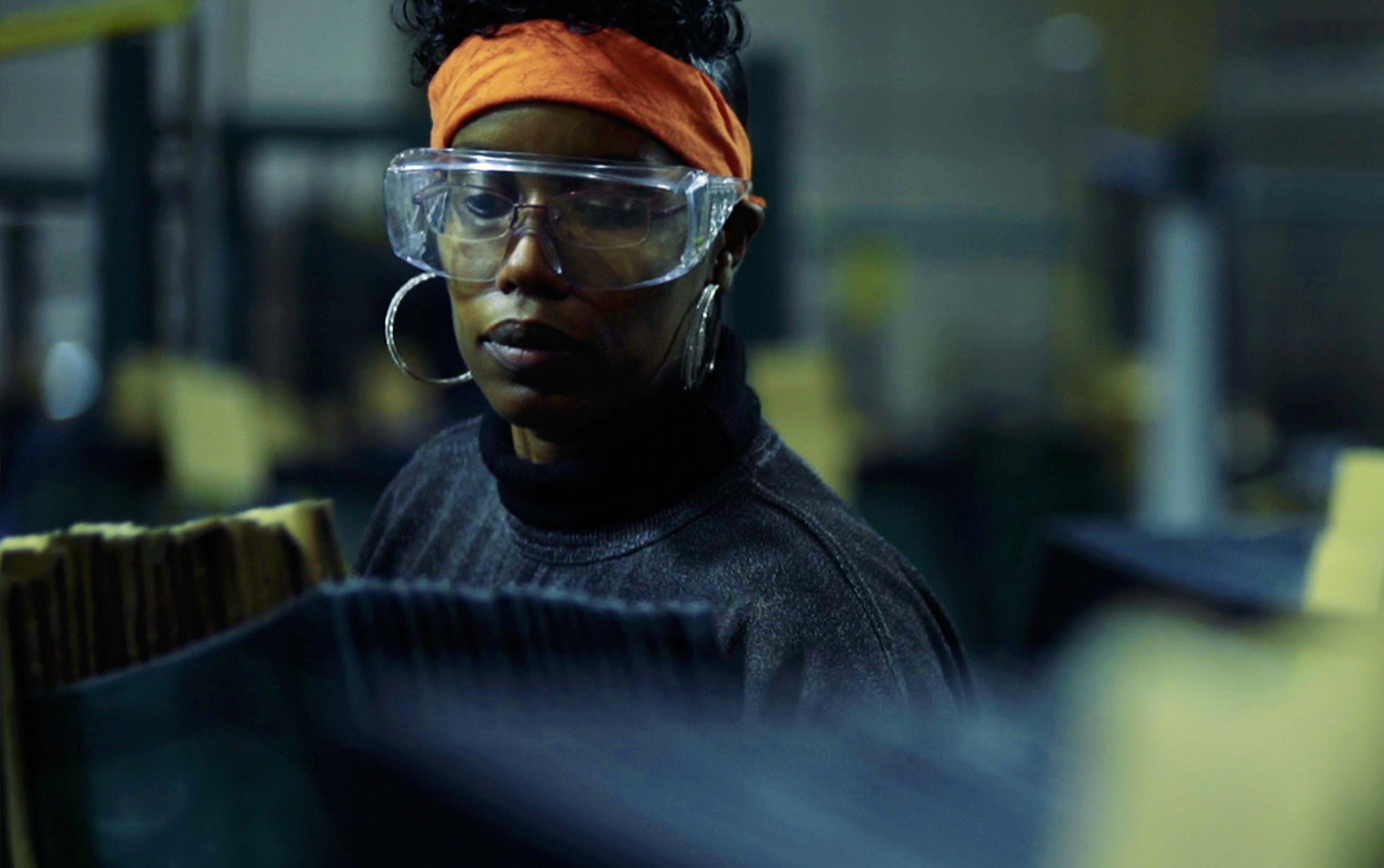
Still of Shawnea Rosser from American Factory. Credit: Steve Bognar
For me, with my process, I need a lot of time alone with the material first. In the case of American Factory, we had over 1,200 hours of footage. I’d never seen so much footage before. Just to screen that amount of footage and wrap my head around it took a long time.
Elaisha: You must have been watching the footage for months.
Lindsay: Yeah, for sure.
Elaisha: And not editing it?
Lindsay: You know, that’s so hard — to just screen and not edit. All you want to do is just start cutting. For me, it ends up becoming a mix of screening and then cutting something that you see that excites you. Then screening some more. But there was definitely two or three months of just wrapping my head around the project. It was just so much to take in. With a project like this, you really need to be strategic about the story beats you’re tackling.
Elaisha: How do you tackle those beats?
Lindsay: Early on in the project, I went out to Key West with Julia and Steve for ten days. At that point, I was pretty familiar with the material. I’d cut together some scenes, and we started to stick note cards up on the wall and talk about the main story, beats, the characters. Julia and Steve had spent time with, like, forty different people, most of whom worked in the factory. We had to narrow down which characters were working in the film and what larger narratives their story spoke to.
Elaisha: How did you whittle down the footage?
Lindsay: I like to cut really fat scenes. At first, you know, just getting two hours down to twenty minutes — basically creating something that’s a more manageable size. So, for example, I arrived in Key West with a six-hour assembly that was only half of the film. All the scenes were fat, and they stayed that way for a long time. But then slowly the story starts to come into focus, and you can see more clearly what you are dealing with. You can see what needs to go and what’s really shining. It’s a process of elimination and whittling things down. We went through that process for a long time before we even started to structure the film.
Elaisha: A six-hour cut culled from 1,200 hours of footage is a pretty big accomplishment. But then keeping it fat also allows you to collaborate with the director, I imagine. Because they can really get into the footage and have real input in crafting the arc.
Lindsay: Yes, exactly. That's really smart of you to point out. It’s especially important when you’re in a remote work situation. It gets us to a place where we can really dig in and talk about where we want to go. Keeping the process fat at the beginning gives everyone the chance to weigh in. Plus, we always have the fat scenes to return to. Because as you start to whittle things down even more and structure the film, the elements you need in a scene will change. You'll cut things out that maybe you'll want to return to. And so it's always easier to go back to your fat assemblies of things versus the raw material. That’s a critical part of my process, right up to the finish line.
“ . . . it's always easier to go back to your fat assemblies of things versus the raw material. That’s a critical part of my process, right up to the finish line.”
Elaisha: What I really loved about this film was the way it juxtaposes these macro sort of titan-of-industry images with the intimate stories of ordinary people. I thought you weaved back and forth between these moments seamlessly. When you’re cutting, do you feel like you are story first or visual first?
Lindsay: I'm emotion first. That's how I base my decisions. Is the scene working emotionally? It has to make me feel something, whether it's happy or sad or funny or devastated. That's the guiding principle on all my projects. That goes for the verité, the interviews, the images, every element of the film. Especially in American Factory, I agree that that's emotional to see the hands on the glass and to think of the human beings behind these products. Image-wise, I had so much to work with. The footage was evocative. A single shot could communicate the fragility of the people behind these big corporations, behind these products. If you can find a single shot to do that story work versus an expository interview, then that's the best way to do it.
I don't like talky documentaries. I don't like people talking at me. I steer clear of anything that feels preachy. But an interview can be useful if it's emotional somehow. And when I say emotional, I don't mean sad. But a palpable emotion. American Factory is a verité film, but there are interviews woven into it.
Elaisha: But very deftly woven. It probably wouldn't be super obvious to the average viewer that there are sit-down style interviews in the film.
Lindsay: Exactly. That's the point. You want the interviews to be invisible so that they just become a part of the fabric of the experience instead of a detour. Ideally, it’s blended in a way that feels really organic. I work really hard on all my films to treat interviews as performances, as an extension of the world I’m building, and not a self-contained element taking us away from the narrative momentum of the film.
Elaisha: Did you know that American Factory was going to be funny? That whole scene at the top where they’re doing the tour of the factory is really funny.
Lindsay: Yeah, definitely. It was one of the reasons I jumped on to the project. I had done a series of more serious films — not that this one isn't serious; it obviously tackles some big, important issues — but I really wanted to try my hand at something funny, and I thought that it was destined to be hilarious, given the cultural clash. As soon as we started to get the early translations of the Chinese, my suspicions were confirmed.
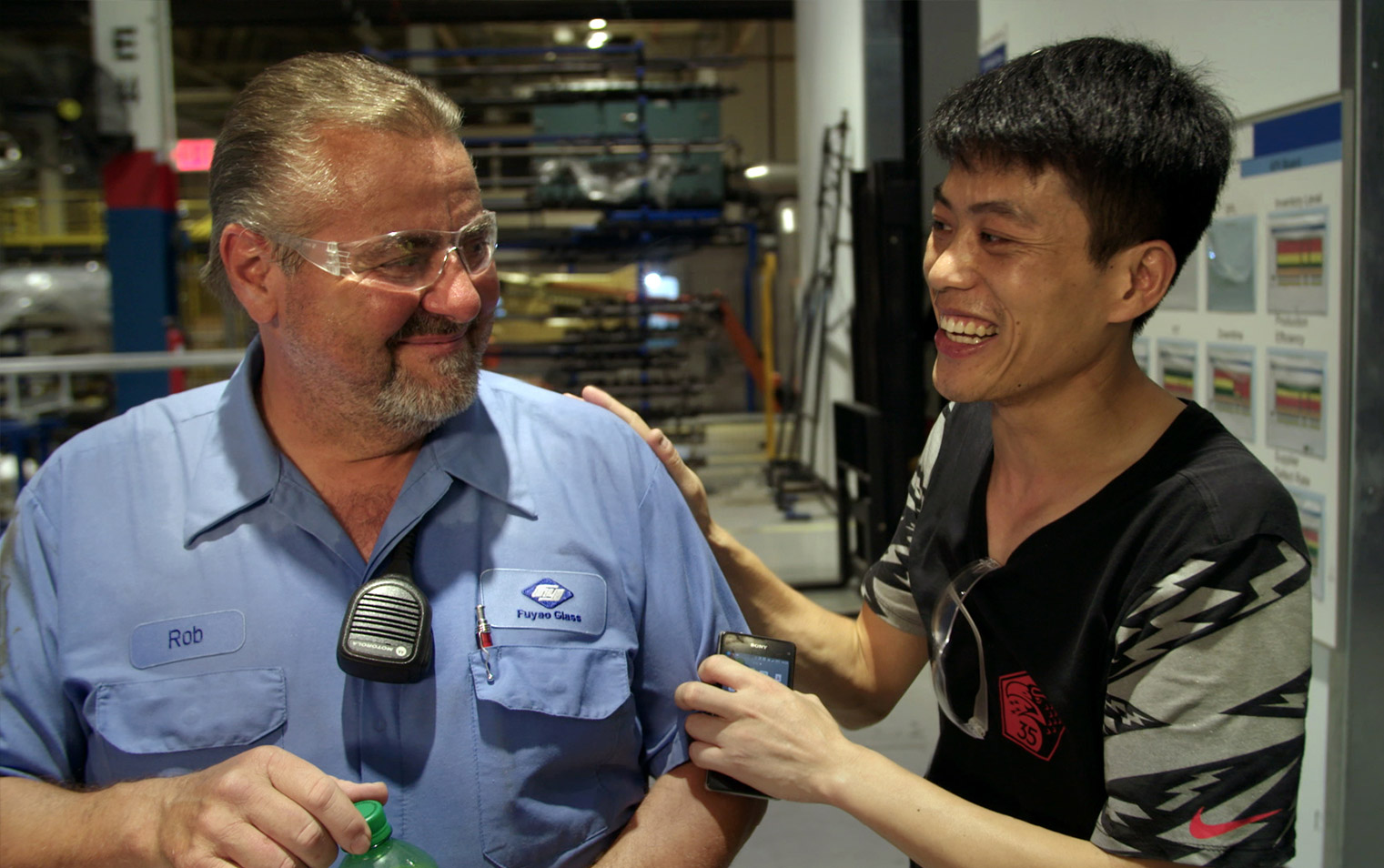
Still of Rob Haerr and Wong He sharing a laugh in American Factory. Credit: Ian Cook
Elaisha: How did that translation process work?
Lindsay: Basically, my assistants and I would watch material, and if we were like, I think something funny is happening here, I think something interesting is happening here, we would send it out to be translated. There’s no way to translate 1,200 hours of verité footage, but you can take a pretty solid guess based on body language. So we would send these scenes out for translation, and a week or two later they would come back. And that was when it was, like, holy shit, this is funny. It was very gratifying. It was like Christmas every time we would get in these translations. And the more and more we had translated, the more it became clear that some of the strongest material was around this cultural clash between the Americans and the Chinese.
What's in the film is a fraction of what we had. There was so much good stuff that never made it into the film, you know? At the end of the day, you can have something five different ways and they're all excellent, but you only need it one way in the film.
Elaisha: Later on in the film the chairman starts to reveal his inner thoughts, and it really complicates the story. There are some heavy and genuinely surprising moments.
Lindsay: The interview with the chairman was an audio-only interview, and that's the interview that’s woven through the end of the film. And, yeah, it was an incredible interview. So revealing.
And I remember when we got the translations in for the New Year’s Eve celebration scene, and we were, like, whoa, the girls in the go-go boots are singing about lean manufacturing. There was so much good stuff from that night we could have done a whole movie on it! Unfortunately, it had to be less than five minutes, you know? You just have to keep losing stuff in order for it all to work in the larger context of the film.
Elaisha: Did you send the crew back at any point to get more material? Or was photography completely finished when you started editing?
Lindsay: No, it wasn’t finished. I'm actually credited as an additional camera on the film, which is hilarious. We were still shooting while I was cutting. I took a trip to Yellow Springs to edit for the week, and suddenly the union battle started heating up. So, they gave everyone a camera — there were seven of us — and we all went to the factory and shot. It was all-hands-on-deck because the story was still very much unfolding while we were cutting.
But, yeah, as I got further into the edit, I requested things, especially after we started to identify our characters. It was fortunate because Julie and Steve are local to the area so they were able to go and do pick-ups.
“Being able to float between those two perspectives — the Americans and the Chinese — is such a fascinating and important thing. Julia and Steve were really smart to have multiple crews on the ground.”
As far as the factory material, there was no shortage of good stuff there. Steve and Julia were prepared and had identified a lot of the story beats. If you think about it, these guys were filming day in and day out in that factory for over two years. They really knew their characters. And they knew everything that was going on in that factory. And then, as we got further into the edit and discovered so much richness in the material that was filmed by the Chinese field producers, it became clear that the film was bigger than any of us could have imagined. Being able to float between those two perspectives — the Americans and the Chinese — is such a fascinating and important thing. Julia and Steve were really smart to have multiple crews on the ground.
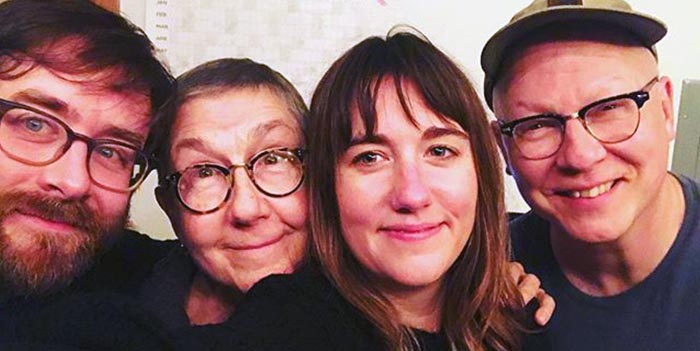
From L to R, Jeff Reichert, Julia Reichert, Utz, and Steve Bognar moments after picture lock of American Factory
Elaisha: How long did it take you to edit this?
Lindsay: It was a year and a half full time.
Elaisha: Wow. How does it feel to be finished?
Lindsay: I think the most gratifying part of finishing a film is not locking picture or the premiere, but rather when it’s out in the world for a while. Because you’re just so raw when you work on a film like this for so long. You’re so emotionally invested in everything about the project — the team, the story, all of it. Locking can be horrifying. You’ve been living and breathing a film for so long, and then it’s, like, oh, my god. You’re just running on adrenaline at that point. And there’s still more to do! The mix, the music.
And then the premiere. The premiere gives me deep anxiety every single time. I don't find it to be an enjoyable experience at all. You're still so connected in this electric way to all the clips and sounds, and I see all the little things I wish I could change. It's all still so raw, you know what I mean? The images become a part of your DNA. But after some time goes by, you start to detach from it. Then you can see it more objectively. Right now I’m in the sweet phase with American Factory, because we’ve made it through all those important early moments, and now we have our release coming up, and I’m proud of the film. So proud. But I can only feel that now because I’ve recovered from the process of working on it, if that makes any sense. I’m able to enjoy it in a different way.
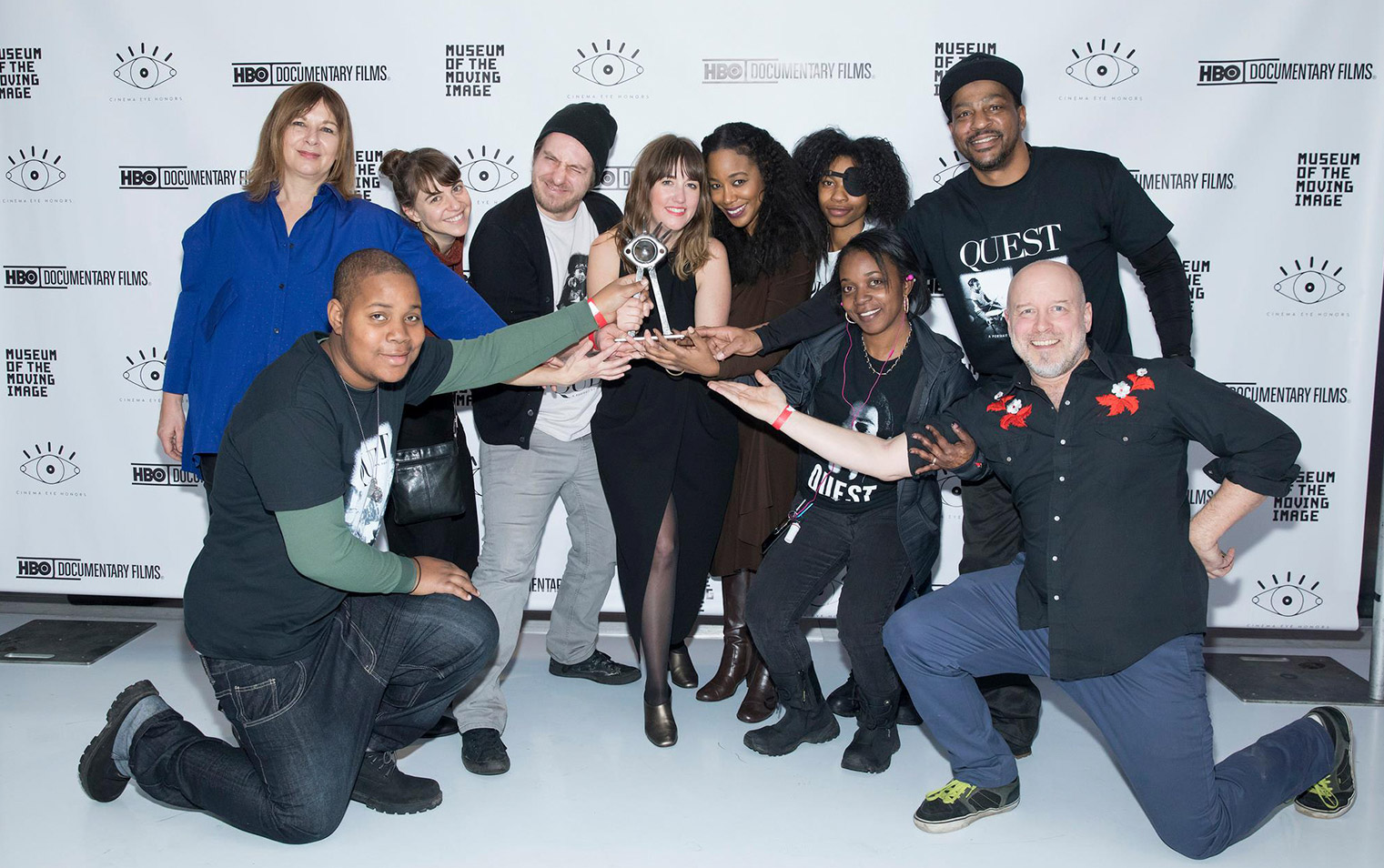
Utz, center, holds her Cinema Eye prize surrounded by the Quest cast and crew.
Elaisha: How many hours do you spend editing a day?
Lindsay: This job is a marathon. I try not to burn myself out. Some days it's six hours; some days fourteen hours. It just depends on where I am at in the process, my mood, my creative energy. Some days I take a lot of walks because I'm stuck, and I need to work out a sequence in my head, which becomes a part of the process. But then some days you're just super in the zone and you don't leave the computer except to go to the bathroom or eat — if you even remember to eat. It’s a mix. In the lead up to any sort of deadline, I'm pretty hardcore. You’re either sleeping or you’re in the edit, and there’s not much in between. But I can’t keep that up for long stretches because it’s so brutal.
Elaisha: Is there also a point of diminishing returns where you start to make some bad choices with the edit?
Lindsay: Sure, but bad choices and bad ideas always lead to good ones. Not always but often. You have to try stuff that doesn't work in order to figure out what does work. I have a lot of embarrassing sequences I would never want anybody to see. They ended up being dumb ideas, but they're all a part of getting to a place where you can feel what’s right for the film and what isn’t. I see that as very much a part of the process now. I don't get too mad at myself about bad ideas.
“. . . bad choices and bad ideas always lead to good ones . . . I see that as very much a part of the process now. I don't get too mad at myself about bad ideas.”
Elaisha: It feels like a life lesson too.
Lindsay: Yeah. I think there's a lot about editing documentaries that is like life lessons, you know? Certainly the interpersonal aspect of editing, like being able to be a good collaborator, to know when to swallow your pride. It's easy to feel defensive when your creativity is on the line, or you have to fight for an idea in the edit room. I try not to ever write off ideas. Or if I find myself doing that I try to keep it in check. Things you may not think can work, work. Or things you thought were brilliant actually aren’t. You have to be a good collaborator. It’s very hard because as a documentary editor you’re required to bring an enormous amount of passion, creativity, and dedication to a project, but at the end of the day, it’s not your film. It’s your baby, for sure, in a lot of ways, but it’s not your film. So you have to find the right balance of fighting for what you think is best for the film and being self-aware enough to know when to back off. You have to have opinions and confidence but simultaneously be patient and supportive of the larger goal. You never win every argument. That goes for everyone! Nobody makes these films alone, and so we’re all so at each other’s mercies. It’s messy and complicated at times, and if you lose perspective and have a bad attitude about it, you’ll just create a kind of hell for yourself. It’s a long road to make a film, and there are good stretches and bad stretches.
But once you've been through the process of finishing a film with a team that you love — and with this film, I love my directors and my producers — it’s just so satisfying. You’ve all tackled this beast to the ground and then get it out in to the world. That's the joy. It's not the finished film. It's the journey of getting there and the incredible miracle that somehow all these people came together and did this thing. There’s a lot of joy in those relationships. These people become family.
Elaisha: Anything else you’d like to add?
Lindsay: Every edit teaches me something new about myself and makes me a better person because it's so challenging. You’re locked in a room with other passionate, creative people, so you have to be nice and you have to be willing to be wrong. Everyone does. And you have to be grateful for the work. Sometimes when it gets really difficult, it’s easy to lose sight of that. But this is a magical job. To get to do these deep dives into worlds that you would otherwise never have access to . . . it’s a privilege. And there’s a responsibility that comes with that. I’m more patient, more humble, and definitely less convinced that I know anything about the world! I’m challenged anew with every project, and not just by the subject matter, but by the collaboration it takes to get these movies over the finish line. I live and breathe it all. It's just who I've become.






